By Savitha Hira
Photography: Valerie Bennett and Orproject;
courtesy Orproject
Read Time: 3 mins
Architecture & Design
studio, Orproject pushes its boundaries yet again to endorse that bespoke
design stems as much from philosophical musings as it backed by scientific
agenda!
Time and again Orproject
has experimented with process and material, delimiting their properties to
evolve precision-driven, highly-engineered futuristic design solutions. Their
offices in New Delhi, London, Beijing and Dubai with partners Rajat Sodhi, Francesco
Brenta, Christoph Klemmt and Haseb Zada are continuously involved in exploring advanced
geometries with an ecologic agenda, resulting in an eco-narrative unfolding
into three-dimensional spaces.
Showcasing their latest
installation “Sahya” meaning Shadow,
at Venice Architecture Biennale 2016, the studio unveils its most recent
breakthrough in form by developing a bespoke double-curvature
surface at an economical price.
Responding to our queries
on the purpose of this installation and its makeup, Rajat Sodhi, the
Delhi-based partner informs us that there are several existing flat-panelled
materials that make building skins and cladding surfaces; however, while it is
possible to develop single curvature surfaces, double-curvature surfaces are
hard to develop. Galvanizing action on this premise, it has taken Orproject 3
years to work with ABS plastic (Acrylonitrile-Butadiene-Styrene is an
opaque thermoplastic polymer) to
develop this bespoke material that is vacuum foamed via an aluminium mould, to
evolve as a double curvature, self-supporting, sturdy and aesthetically pliable
material with infinite possibilities.
The added bonus being that
while a single mould was used to extrude approx. 250 sheets of the product, bespoke
individual panels were CNCed from it, resulting it 250 distinct panels of size
2 ft x 1ft, weighing approximately 1.3 kg (no significant change from that of
the existing aluminium panels currently used in the building industry) and the
entire exercise is effected as a commercially viable solution – an
aesthetically resplendent, alternative material to prevailing flat panels.
“The organic geometrical wave-like
form that is designed as a wall and roof system mediates between the motion of air
and light and controls sunlight and views, while the curved elements direct
wind into the interior space. It is designed as a prototype to respond to
environmental conditions in hot climates,” enlightens Rajat.
With
Sahya, the architects have explored the possibilities and variations that can
be achieved by utilizing a single mould, out of which more than 50% of the
panels are identical. Yet the individual panels and resultant smaller segments
that are cut out are bespoke. By arranging these in several parallel layers,
the system allows for a large amount of variation in the resulting overlay as
an aluminum facade system with possibilities to create varying openings and
shadow patterns that can also be used to generate a perforated lattice screen. As the material has small
perforations like the Indian jali , in addition to its
aesthetic makeup, it exhibits significant insulating properties.
Pragmatic applications will
include pavilions with structural and shading properties for hot climates;
interior applications; façade systems for new as well as existing buildings
seeking climatic controls etc.
Sahya has been constructed
for the 15th International Architecture Exhibition - La Biennale di
Venezia and is on display at Palazzo Mora, Strada Nova, from 28 May-27 November
2016.

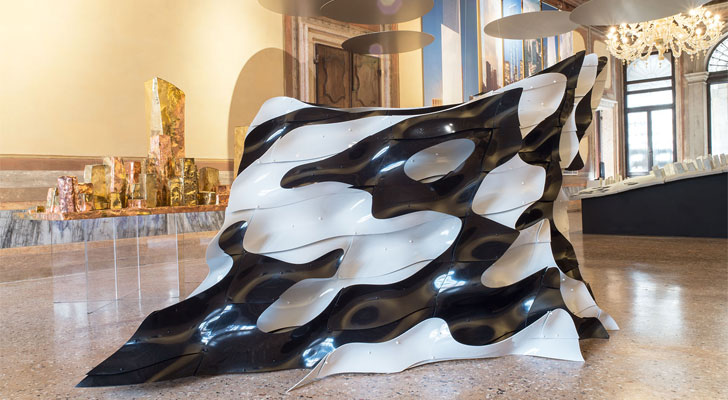
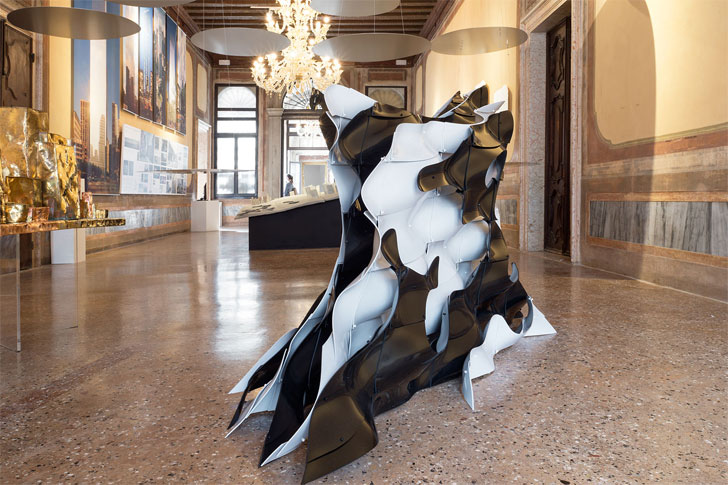
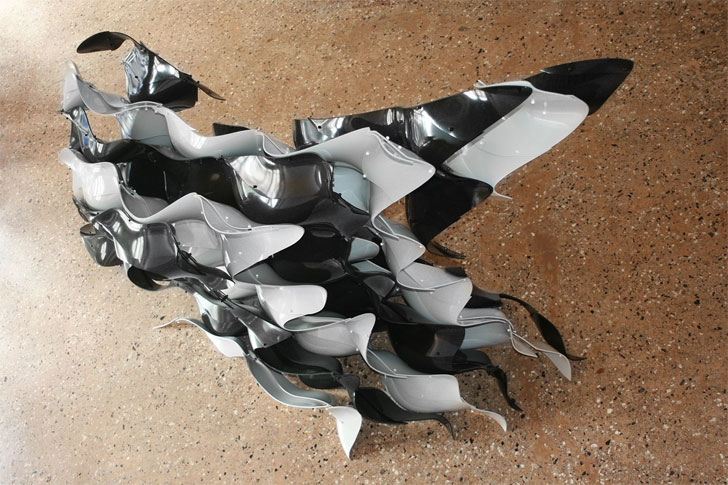
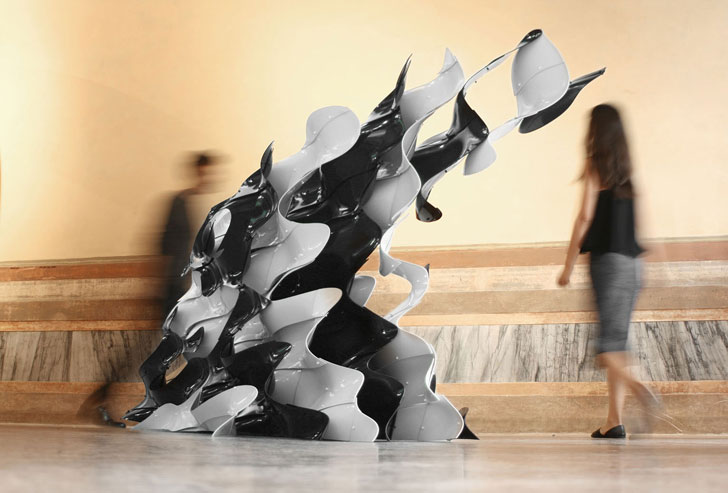
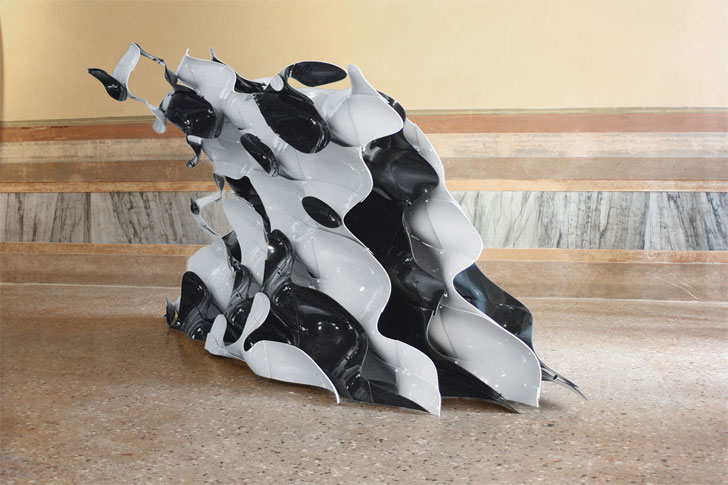
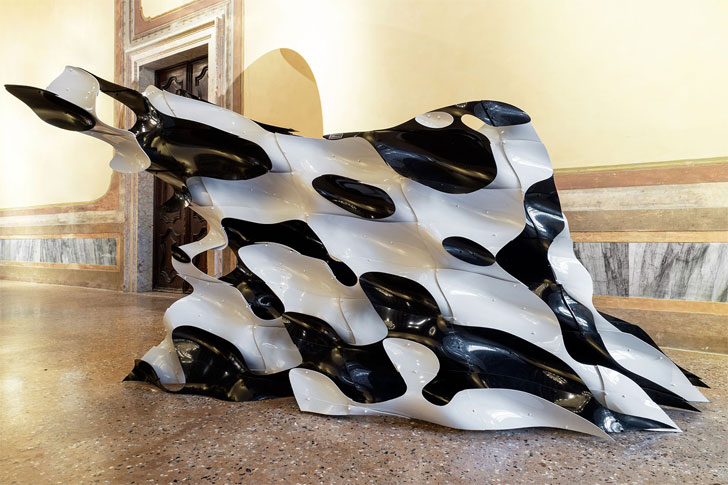
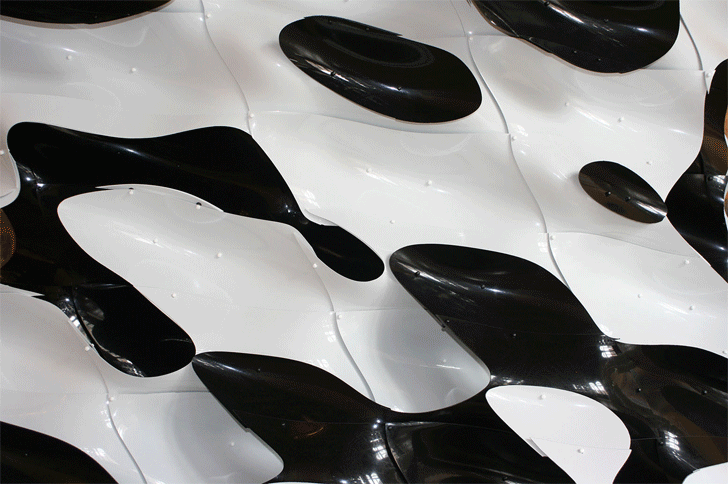
looks interesting
ReplyDelete